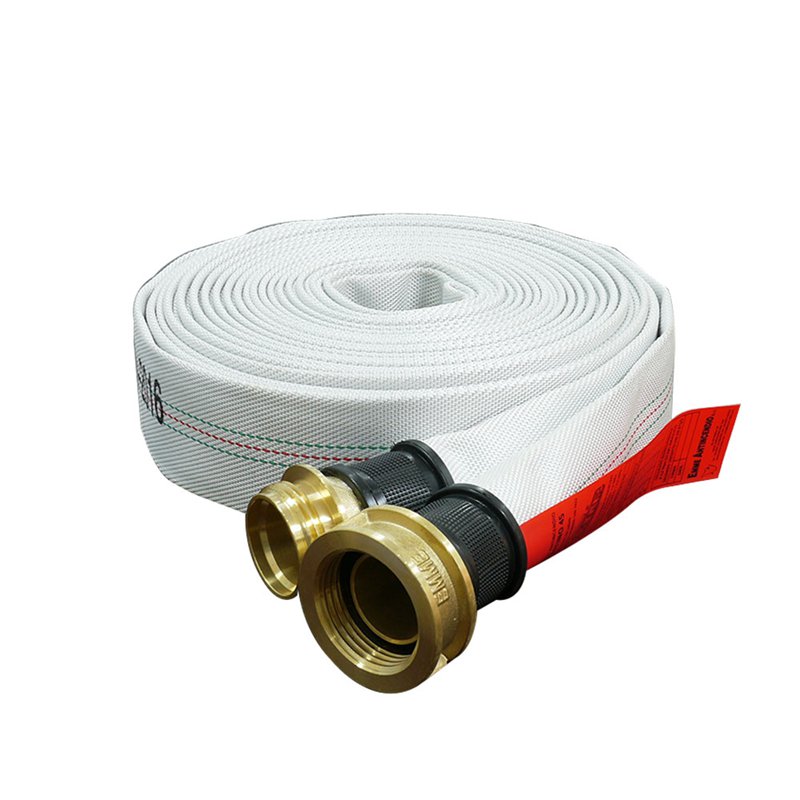NEWS
Precautions during the use of fire hose
- Categories:Technical Knowledge
- Author:
- Origin:
- Time of issue:2021-04-20 17:43
- Views:0
Precautions during the use of fire hose
(Summary description)The fire hose is a hose used for water delivery on the fire site. According to the material, it can be divided into lined fire hose and unlined fire hose. Among them, the unlined fire hose has low pressure resistance, high resistance, easy to leak, and is easy to mold, and has a short life span. It is suitable for laying in the fire field in a building; the lined hose is resistant to high pressure, abrasion, mildew, and durable. It is durable, not easy to leak, and has low resistance.
- Categories:Technical Knowledge
- Author:
- Origin:
- Time of issue:2021-04-20 17:43
- Views:0
The fire hose is a hose used for water delivery on the fire site. According to the material, it can be divided into lined fire hose and unlined fire hose. Among them, the unlined fire hose has low pressure resistance, high resistance, easy to leak, and is easy to mold, and has a short life span. It is suitable for laying in the fire field in a building; the lined hose is resistant to high pressure, abrasion, mildew, and durable. It is durable, not easy to leak, and has low resistance. It can also be bent and folded at will, moved at will, easy to use, suitable for laying outside fire sites and connecting fire trucks.
Pay attention to when using fire hose:
1. Sudden twists and turns should be avoided during laying to prevent the ability to withstand water pressure from being reduced; twisting should also be avoided to prevent the hose from rotating after being filled with water and causing the internal buckle hose connector to disengage.
2. Avoid dragging on the ground forcibly after filling with water. When you need to change the position, try to lift and move as much as possible to reduce the wear of the hose and the ground.
3. Avoid contact with corrosive chemicals such as oils, acids, and alkalis.
4. In areas where flames or strong radiant heat may be present, cotton or linen hoses should be used.
5. After use, it should be cleaned. The unlined hose should be hung in the sun. After drying, the coil should be stored in a cool and dry place.
6. If there are broken holes in the process of use, it should be wrapped tightly with a hose cloth, and darn or glued as soon as possible afterwards; when there is obvious damage, immediately withdraw from combat readiness.
7. When the vehicle needs to pass the laying water belt, the water belt bridge should be installed at the passing position in advance.
8. If you need to pass the railway when laying, you should pass under the rails.
9. Lined hoses should be used outside buildings in cold areas to prevent the hoses from freezing.
Fire hose accessories
Hose accessories mainly refer to the accessories necessary to connect and use fire hoses, including interfaces, water separators, etc.
1. Interface
The interface is the connection between the hose and the hose, fire pump, fire hydrant or mobile water monitor. Mainly include hose interface, pipe thread interface, valve cover, internal thread fixed interface, external thread fixed interface, reducing interface, special-shaped interface, etc.
Attention should be paid during use:
(1) When using and storing, avoid falling, bumping and heavy pressure to prevent deformation and make assembly and disassembly difficult.
(2) Before connecting, check the chute and the sealing part carefully. If there is debris such as sludge and sand, it must be removed in time to prevent difficulty in assembly and disassembly and poor sealing.
(3) When connecting the inner button interface, insert the buckle claw into the chute and then screw the foot in a clockwise direction. When connecting the water belt, you need to straighten the water belt, and twist the waterproof belt to make the interface detach by itself.
(4) When connecting the plug-in interface, insert it until you hear the sound of the spring pin of the female interface extending to the card slot of the male interface to ensure reliable connection.
(5) When storing, please avoid contact with chemicals such as acids and alkalis to prevent corrosion of metal parts and deterioration of rubber seals.
2. Water separator
The water divider is a connecting device that divides the water flow from the outlet line to the branch water flow. According to the number of branch lines, there are two points, three points and four points.
(1) structure
Each water divider has one water inlet and several water outlets, which can be used at the same time or separately. The interfaces are all internal buckle type. The water outlet is equipped with a stop valve or a ball valve, which can be closed at any time to control the water flow and facilitate the addition and exchange of branch hoses.
(2) Use and maintenance
Before use, check whether the interface sealing ring and valve are intact and easy to use. In severe winter, try to keep warm to prevent freezing failure. Rinse it with clean water after use.
The National Standardization Management Committee Announcement No. 23 of 2011 approved the release of GB6246-2011 "Fire Hose", which is a mandatory national standard and will be implemented on June 1, 2012. Since the date of implementation of the standard, the following three standards shall be abolished: GB6246-2001 "Lined Fire Hose Performance Requirements and Test Methods"; GB4580-1984 "Unlined Fire Hose"; GA34-1992

Scan the QR code to read on your phone
Nantong Sentian Fire-Fighting Equipment Co.,Ltd.
Service Hotline:
Address:
No.10, Yangsha Road,Qidong City,Jiangsu,China.
Copyright © 2021 Nantong Sentian Fire-Fighting Equipment Co.,Ltd. 苏ICP备17053518号



